How to Use Microsoft Remote Desktop Windows 10 Home Edition

Remote Desktop Protocol (RDP) has been a feature of Windows since the XP Pro days. Here's a look at using it in Windows 10 with the Remote Desktop app.
Remote Desktop Protocol (RDP) has been a feature of Windows since the XP Pro days. It makes it easy to connect from one PC or device to another to retrieve files or provide PC support.
There are several free utilities out there that will get you set up with a remote connection. Some that come to mind are services such as join.me, TeamViewer, and Chrome Remote Desktop and are especially handy when connecting between different platforms. But if you're in a pure Windows environment, here's a look at how to enable the built-in RDP utility in Windows 10, which will allow you to connect to your Windows box remotely.
Enable Remote Desktop for Windows 10 Pro
The Remote Desktop or RDP feature is disabled by default, so you will need to enable it in the settings. There are several ways to do this; let's review the easiest.
-
- Open Settings
- Click System > Remote Desktop
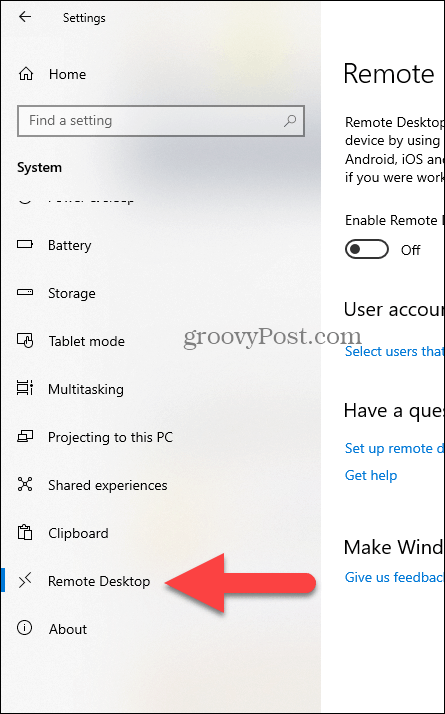
-
- Click the toggle Enable Remote Desktop
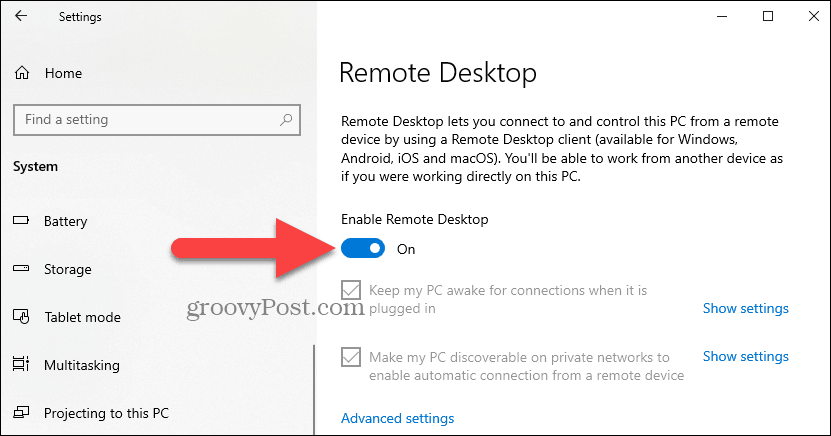
- Click Confirm when prompted.

Expert Note:
You can also enable Remote Desktop using the System Properties. Press the Windows Key and Type: advanced system. Click View advanced system settings.

Click the Remote tab and select Allow remote connections to this computer. Keep the box checked for Network Level Authentication for better security. Also, note that you will need to enable incoming remote connections on the PC you're connecting.
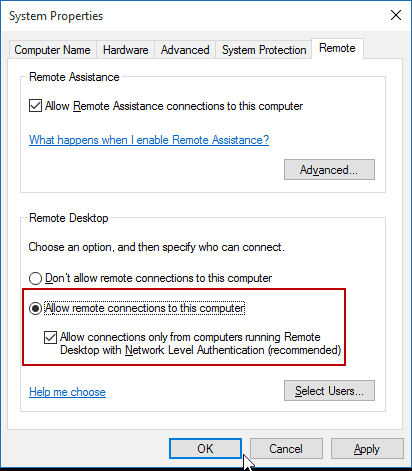
Remote Into Your PC
You have a couple of choices when it comes to how you remotely connect to the other computer. You can use the traditional desktop app or the Remote Desktop universal app. For this, I'm connecting to my Windows Home Server on my home network. I'm also going to use the app that you can install from the Store. It's more versatile and can be used on mobile platforms, including iOS and Android.
Tip: If you have many PCs and devices on your home network, a useful free utility to use is Advanced IP Scanner.
Launch the app and type a name for the PC or device, its hostname or IP address, and select Connect.
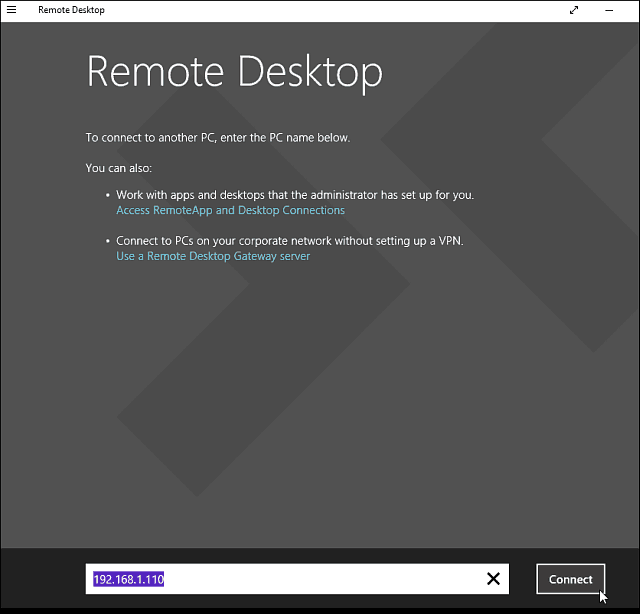
Next, enter the username and password used for the computer you're connecting into. Also, if you're going to remote into it often, check the box to remember your credentials.
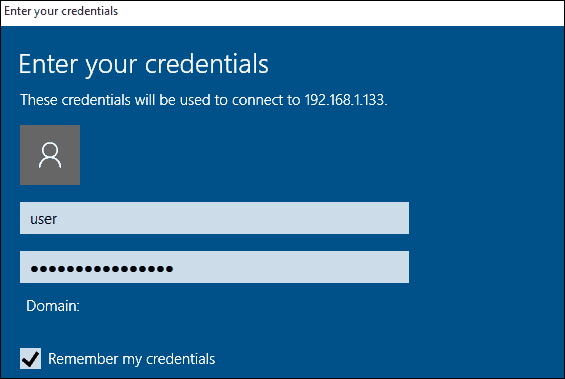
If you get the following security message, click Go ahead and Connect and check the box not to remind you again. You know what you're doing; no reason for Windows to be constantly nagging you.
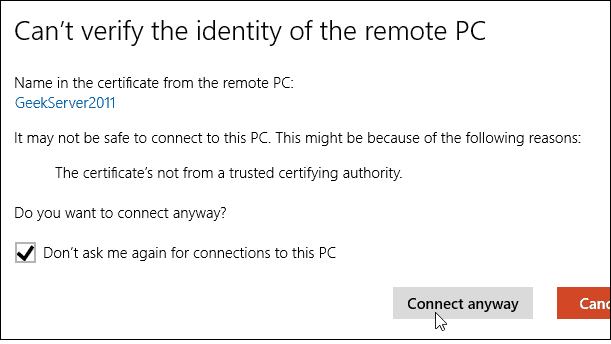
There you have it. You can now start using the remote computer for configuration, remote support, or however you need to use it.
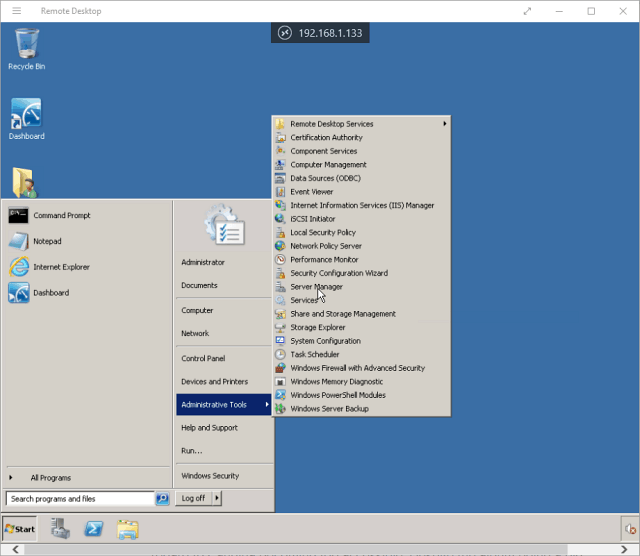
I should also mention that you can go to Settings > connection settings in the app and configure the appearance, devices and make other adjustments that work for you.

More About Remote Desktop Connections
If you're running a previous version of Windows or looking to remote access your Windows PC from your smartphone or tablets, check out the articles linked below for more.
- How to Enable Remote Desktop in Windows 7
- Make Remote Desktop Connections Work Faster
- Enable Remote Desktop for Windows 8
- Using the Windows Phone Remote Desktop App
- Remote Desktop Into Windows from a Mobile Device

How to Use Microsoft Remote Desktop Windows 10 Home Edition
Source: https://www.groovypost.com/howto/setup-use-remote-desktop-windows-10/
0 Response to "How to Use Microsoft Remote Desktop Windows 10 Home Edition"
Post a Comment